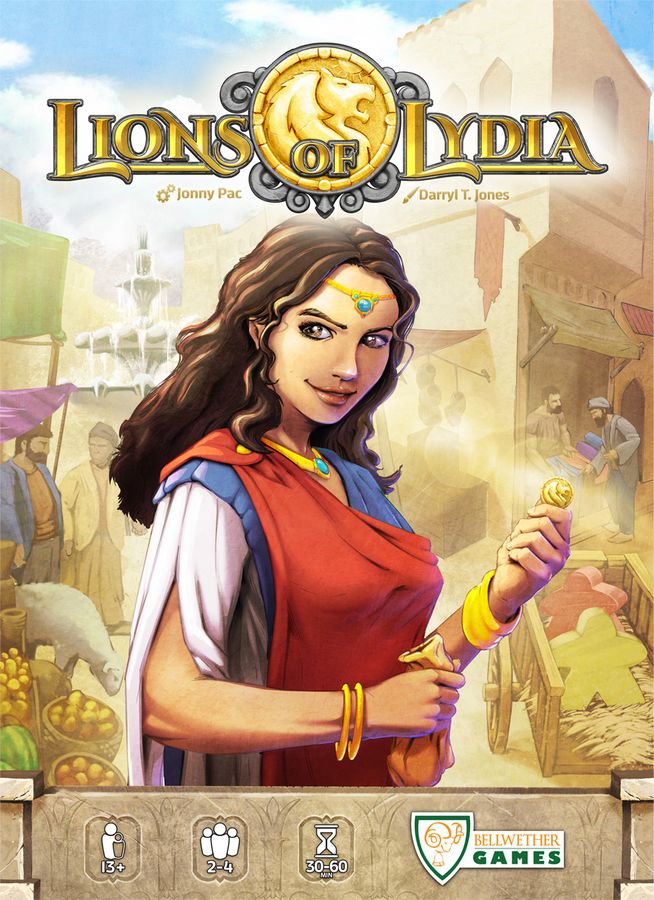The Quest for El Dorado is Reiner Knizia’s take on the deck-building genre. It has been more than 10 years since the world was introduced to deck-building games with Dominion, but The Quest for El Dorado is Knizia’s first...
The Quest for El Dorado is Reiner Knizia’s take on the deck-building genre. It has been more than 10 years since the world was introduced to deck-building games with Dominion, but The Quest for El Dorado is Knizia’s first deck-building game. The Quest for El Dorado was released in 2017 by Ravensburger, but as of 2019, there is a new edition with gorgeous art from Vincent Dutrait. The game is language-dependent so if you want this newer edition in English you will have to get one from Finnish publisher Lautapelit.fi There are other localized editions as well. Note that these editions are not compatible and that the expansions that were released for the first edition are not compatible with this new edition. Knizia has announced that he will develop separate expansions for both editions. I own the new edition and will make this review from that point of view.
What is The Quest for El Dorado like?
The Quest for El Dorado is a deck-building and racing game where the goal is to be the first player to get your meeple adventurer from the start tile to the end tile, which represents El Dorado. The first player to reach El Dorado wins the game. The route is formed by a predetermined number of tiles. The rulebook contains a large number of routes you can make with these tiles, but you can also experiment with creating different routes yourself. Each tile has a grid of hexes with different terrain types to navigate through the play of cards.
On their turn players may play cards, from their starting hand of four, matching the terrain type to move their meeple from hex to hex. Other cards played from hand may give other bonuses. Players may also buy new cards from the market with cards from hand with coins on them. This is very similar to all deck-builders, yet Knizia has found a way to improve on this. At the start of the game, there are 6 different piles available to buy from in the market. 3 cards in each pile. Once a pile is depleted, the next player who wishes to buy a card can choose one card from the other remaining piles, or choose a new pile of 3 cards to place in the market from outside of the game and buy one of those cards. Which cards are available for purchase during the game is entirely up to the players. At the end of their turn players may discard leftover cards in hand and redraw up to four cards in hand.
What cards you want to buy during the game depends on what strategy you want to pursue, but also on the route you want to take in your race to El Dorado. Some longer routes might be more rewarding but will require investment on certain terrain cards. This is very cleverly done and it is often a good idea to analyse the route at the start of the game to see what cards might be more valuable than others.
No deck-building game is complete without a way to thin your deck and The Quest for El Dorado is no exception. There are hexes where you can remove the card you used to move to that hex from your deck. And there are also cards that can be bought that help you remove weaker cards from your deck.
Rating

Reiner Knizia has not re-invented the genre but did find room to innovate the deck-building genre in a few ways, but The Quest for El Dorado is generally a fairly simple deck-builder. For people who have never played a deck-builder this is also a great introduction to the genre due to its simplicity. Personally, I like a game that combines deck- building with different game mechanisms more than a pure deck-builder. Here in The Quest for El Dorado it is a race aspect that functions as the win condition.
The announcement that there are also expansions is a nice prospect, but absolutely not necessary to guarantee replayability. The replayability in this base game is already enormous because there are endless possibilities to vary the route the adventurers have to take and the different decks in the market during the game.
Unlike some vanilla deck-builders, the theme actually does come through because of the race element. Using machetes to travel into the woods and pedals to travel over water fits the theme. I also like the production quality. Nice cards and vivid artwork. The cards are bigger in this version than in the Ravensburger version, which does make this more of a table hog I suppose.
One negative I can think of is that I have played games in which my opponent or I had a big lead at the beginning of the game which others could not keep up with due to some bad luck. Playing through the rest of the game knowing who is going to win is not fun. Staying behind a bit to improve your deck is a viable strategy, but there were certainly games where bad luck had a hand in the outcome. Another minor thing is that the setup time is a bit long for a 30-minute game, especially if you are debating what map to play and depending on how you store the cards.
I would like to say that The Quest for El Dorado is a better introduction to the deck-building genre than the classic Dominion. The great thing about the market system is that the card decks are added to the game in phases. As a result, there is no excess of choices, and you can learn the decks as they come into play. The Quest for El Dorado is a great hit in my family. My 8-year-old has no problem understanding the rules and is even able to win sometimes.
Good
Quick turnsBeautiful artworkLots of replayability in the base gameBad
Luck of the drawSetup timeNeeds a lot of table spaceFacts
Players: 2 – 4Playing time: 30-60 minutesSuggested age: 10+The post Review: The Quest for El Dorado appeared first on Tabletop Together.
















